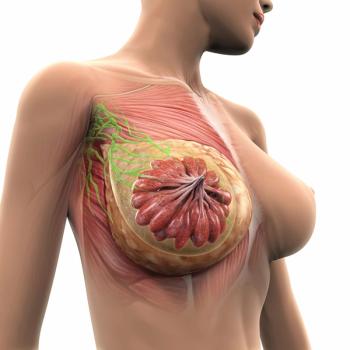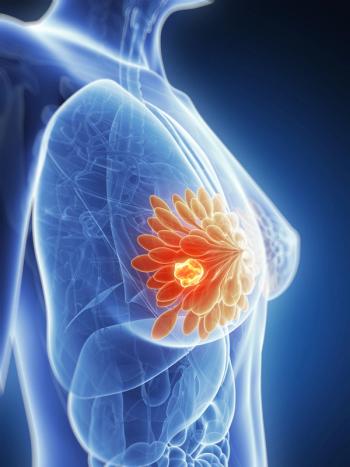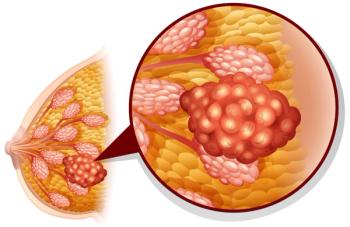
Oncology NEWS International
- Oncology NEWS International Vol 9 No 9
- Volume 9
- Issue 9
Placebo-Controlled Study to Evaluate Adjuvant Exemestane After Tamoxifen
CANTON,Ohio-Occult micrometastases may still be present after the standard 5 years of tamoxifen adjuvant hormonal treatment for patients with stage I or II breast cancer and receptor-positive tumors. Some of those micrometastases may be estrogen- or tamoxifen-sensitive, stated Terry Mamounas, MD, adding that this is a major reason the National Surgical Adjuvant Breast and Bowel Project (NSABP) has undertaken clinical trial NSABP B-33. The trial will compare 2 years of exemestane (Aromasin) to 2 years of placebo in postmenopausal, estrogen receptor-positive stage I-II breast cancer patients who are disease free after being on tamoxifen (Nolvadex) for 5 years.
CANTON,OhioOccult micrometastases may still be present after the standard 5 years of tamoxifen adjuvant hormonal treatment for patients with stage I or II breast cancer and receptor-positive tumors. Some of those micrometastases may be estrogen- or tamoxifen-sensitive, stated Terry Mamounas, MD, adding that this is a major reason the National Surgical Adjuvant Breast and Bowel Project (NSABP) has undertaken clinical trial NSABP B-33. The trial will compare 2 years of exemestane (Aromasin) to 2 years of placebo in postmenopausal, estrogen receptor-positive stage I-II breast cancer patients who are disease free after being on tamoxifen (Nolvadex) for 5 years.
Dr. Mamounas, Medical Director at Aultman Cancer Center in Canton, Ohio, discussed the B-33 trial design (see Figure) at a clinical investigators workshop sponsored by the University of Texas M. D. Anderson Cancer Center and Pharmacia Oncology.
Study Aims and Design
The primary aim of this study is to determine whether adjuvant exemestane after 5 years of tamoxifen prolongs disease-free survival vs placebo, Dr. Mamounas said. Secondary aims are to determine whether adjuvant exemestane prolongs overall survival vs placebo and to evaluate the effect of exemestane and of tamoxifen withdrawal on bone mineral density.
The protocol design calls for enrollment of 3,000 patients, which is anticipated to require 40 months. The study is designed to have an 80% power to detect a 21% reduction in hazard rate and assumes that 50% of patients will be node-negative.
Articles in this issue
over 25 years ago
Soy’s Effect on Breast Cancer Remains Uncertainover 25 years ago
STAR Enrollment Tops 6,000 in First Year of Recruitmentover 25 years ago
New rhTPO Being Tested in Three Trialsover 25 years ago
New Research Centers Target How Market Forces Affect Health Careover 25 years ago
PRIMATOM System Combines CT Scanning With Radiation TherapyNewsletter
Stay up to date on recent advances in the multidisciplinary approach to cancer.





















































































